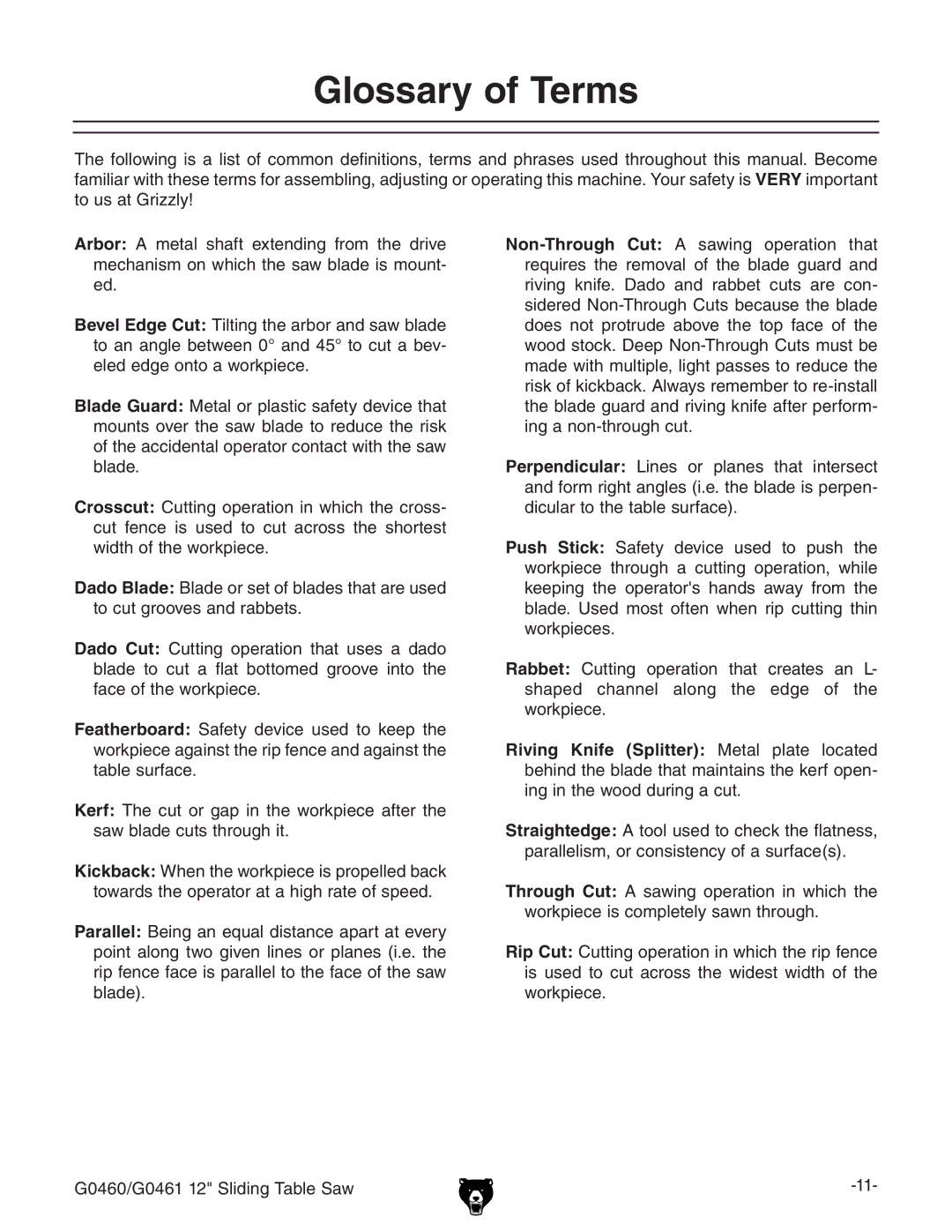
Glossary of Terms
The following is a list of common definitions, terms and phrases used throughout this manual. Become familiar with these terms for assembling, adjusting or operating this machine. Your safety is VERY important to us at Grizzly!
Arbor: A metal shaft extending from the drive mechanism on which the saw blade is mount- ed.
Bevel Edge Cut: Tilting the arbor and saw blade to an angle between 0° and 45° to cut a bev- eled edge onto a workpiece.
Blade Guard: Metal or plastic safety device that mounts over the saw blade to reduce the risk of the accidental operator contact with the saw blade.
Crosscut: Cutting operation in which the cross- cut fence is used to cut across the shortest width of the workpiece.
Dado Blade: Blade or set of blades that are used to cut grooves and rabbets.
Dado Cut: Cutting operation that uses a dado blade to cut a flat bottomed groove into the face of the workpiece.
Featherboard: Safety device used to keep the workpiece against the rip fence and against the table surface.
Kerf: The cut or gap in the workpiece after the saw blade cuts through it.
Kickback: When the workpiece is propelled back towards the operator at a high rate of speed.
Parallel: Being an equal distance apart at every point along two given lines or planes (i.e. the rip fence face is parallel to the face of the saw blade).
Perpendicular: Lines or planes that intersect and form right angles (i.e. the blade is perpen- dicular to the table surface).
Push Stick: Safety device used to push the workpiece through a cutting operation, while keeping the operator's hands away from the blade. Used most often when rip cutting thin workpieces.
Rabbet: Cutting operation that creates an L- shaped channel along the edge of the workpiece.
Riving Knife (Splitter): Metal plate located behind the blade that maintains the kerf open- ing in the wood during a cut.
Straightedge: A tool used to check the flatness, parallelism, or consistency of a surface(s).
Through Cut: A sawing operation in which the workpiece is completely sawn through.
Rip Cut: Cutting operation in which the rip fence is used to cut across the widest width of the workpiece.
G0460/G0461 12" Sliding Table Saw |
